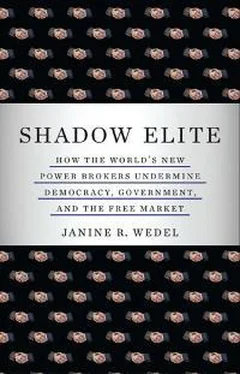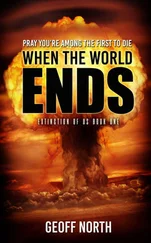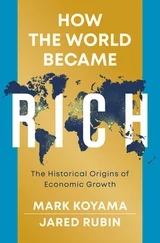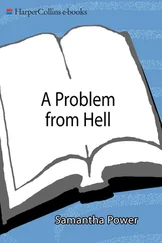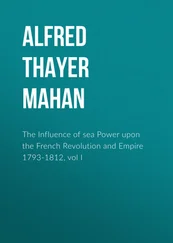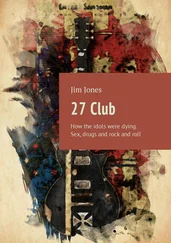Organizing Truthiness
Following 9/11, the case had to be made to the public that Iraq posed a serious threat to the United States. Invading the cradle of civilization was not only justified, but necessary.
While discussion about whether to go to war was stunningly absent in the bureaucracy, discussion about how to sell it was ubiquitous, according to many insiders. As Paul Pillar summed it up: “The discussion was only about the message to the public. It was all about what will persuade the public. It was all selling. In the past, getting public support was important, but this was all-consuming.” 99
In an atmosphere of federal governing carried out to a large extent by private entities, in which the state and the private sector each have a part and each reinforces the other, who best to sell the effort? Richard Perle and the Neocon core, of course, itself composed of players on both the outside and inside, as well as those individuals who bridged and blurred the state-private divide. Accordingly, members of the Neocon core helped organize a band of collaborators in the media, friendly think tanks, and political organizations.
These players formed an overlapping effort with another group of longtime neoconservative activists who mostly made their mark as public intellectuals and pundits. Many of them constitute a parallel collection. Front and center are the political commentator William Kristol, son of the elder Kristol, who edits the Weekly Standard (which he founded in 1995 together with John Podhoretz, son of the elder Podhoretz), and Robert Kagan, cofounder and codirector of the Project for the New American Century and a Washington Post columnist. As journalist John Judis expounded, “the neoconservatives were part of a broader network of writers, editors, academics, and activists that gave them access to the Wall Street Journal ’s editorial page, Murdoch’s Fox News, The New Republic , the Washington Post editorial page, and a host of friendly conservative publications including the National Interest, Policy Review, Commentary , and National Review , as well as conservative talk radio.” To make the war happen, these neoconservative public intellectual activists relentlessly graced the airwaves and op-ed pages, advocating for and defending the invasion of Iraq. 100
It goes without saying that Perle was ubiquitous. He claimed on the airwaves that there were “substantial links” between Iraq and al Qaeda. He told the British House of Commons that the U.S. would attack Iraq even if UN weapons inspectors found nothing. 101In fact, quasi-government official Perle (head of the Defense Policy Board) gave talks all over Europe promoting the war. Wilkerson’s boss, Secretary of State Powell, privately grumbled that “Perle is doing a lot of proselytizing around the world.” Powell instructed Wilkerson to compile a dossier of Perle’s speeches and activities, of what he was saying and to whom. As Wilkerson expressed: “He was making remarks as if he were an official inside the U.S government. The Germans, French, Brits, and Japanese perceived him as an official purveying official U.S. policy. . . . He was giving speeches about the need to take out Saddam Hussein, the reliability of Ahmed Chalabi, Saddam Hussein’s intent to use nuclear weapons. He was also pitching the argument for preemption [preemptive war]. . . . I had to bring on an extra staff person to keep up [the dossier]. It turned into five notebookss . . . and they were big notebooks too! One was four-inches thick,” he said. 102
Helping to advance the marketing effort, both in the run-up to the war and in its early years, was Benador Associates, which represented many neoconservatives. The firm ran a well-coordinated and targeted campaign. Often more than once a day, Benador sent out an e-mail titled “Eleana’s Choice” or “Latest Articles by Our Experts” to some 4,000 journalists and other subscribers. 103The 24/7 campaign not only included articles, say, promoting and defending the war in Iraq, but a minute-by-minute chronicle of neoconservative responses to critics, ranging from the failure to find weapons of mass destruction in Iraq to American military abuse of prisoners. Benador’s efforts were often rewarded quickly. For example, in the National Review Online of April 30, 2004, Frank Gaffney refuted the claims of an April 27, 2004, New York Times article detailing the workings of Feith’s two Pentagon shops. 104
The New York Times’s star reporter Judith Miller turned out to be that paper’s leading handmaiden for the neoconservatives. Out of her usual access to Chalabi, Libby, and others came riveting front-page stories of Iraqi weapons of mass destruction and the threat they posed to the United States.
The “echo chamber” reverberated. Like their communist forebears, the neoconservatives are very skilled at framing issues, creating front organizations, and planting and propagating stories. Jim Lobe has tracked several stunning cases of neoconservative media orchestration. One, right after 9/11, introduces the idea that organized governments (read Iraq) are supporting terrorists, and that they must be held to account. The run of stories begins on September 12, 2001, with Perle quoted in the Washington Post , through Kristol on National Public Radio and Fox News with a like message, and extends to the September 20 publication of a letter signed by thirty-seven people, primarily neoconservatives, printed in several publications. 105
Another example of orchestration documented by Lobe goes as follows: Chalabi planted a story with Judith Miller about Saddam Hussein having an active nuclear weapons program, which appeared in the New York Times on December 20, 2001. James Woolsey repeated it on MSNBC’s Hardball with Chris Matthews that same evening, giving it further attention. Perle gave it ultimate credibility by publishing an op-ed piece in the New York Times a week later. Then, with this story having been test driven, at a pivotal moment, when Cheney needed to discredit Joseph Wilson, the vice president picked it up several months later. 106
Throughout this echo chamber, the medium was the message and the message was managed. Libby and Hadley were part of the White House Iraq Group (WHIG), a secret organization founded to persuade the American public that the war in Iraq was necessary by any means possible, including by leaking intelligence to the media. According to an authoritative study by media scholars Charles Lewis and Mark Reading-Smith of speeches, briefings, interviews, and testimony in the run-up to the war, also pivotal in rousing public opinion was the meticulously coordinated and overlapping misinformation campaign conducted by President Bush and seven top administration officials. 107
Truthiness helped enable the successful march to war. Of course the “facts” that make up the “truthy” picture are really images—resilient ones, oft repeated, from the mushroom cloud and supposed terrorist training ground in Iraq to the supposed meeting between the 9/11 terrorist Mohamed Atta and an Iraqi official. 108And it doesn’t really matter if the mushroom cloud or training ground are real or the meeting took place, the images stick, and we believe the image, thus producing the “reality.” (The Senate Intelligence Committee concluded that President Bush and his advisers exaggerated claims of Iraq’s weapons and terrorist ties by suggesting an Iraq and Al Qaeda partnership that was not corroborated by intelligence. 109)
The acceptance of truthiness is made all the more insurgent by the institutional backdrop it partially plays on: the devaluation of knowledge and the blurring of boundaries between punditry and journalism (recall General Barry McCaffrey and the other retired high-ranking military professionals retained by major television networks as ostensibly neutral commentators) and the parallel decline in the institution of investigative reporting.
Читать дальше
